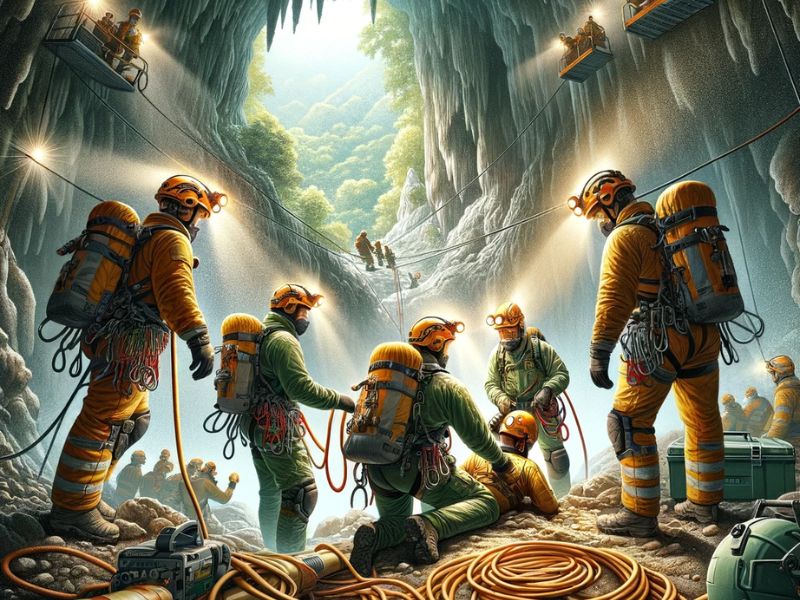
Cave Rescue Strategies and Challenges: An Overview
A detailed analysis of techniques and risks associated with underground rescue operations
Cave rescue is one of the most complex and hazardous rescue operations. It requires a unique combination of technical skills, courage, and strategic planning. In this article, we explore the techniques, challenges, and recent examples of cave rescue operations, providing a comprehensive view of this crucial discipline.
Techniques and Preparation for Cave Rescue
Cave rescue operations require a wide range of technical skills, similar to those used in mountaineering and confined space rescue. These operations are characterized by challenging environmental conditions such as tight spaces, darkness, and sometimes flowing or stagnant water. Rescuers must be trained in caving techniques, advanced first aid, and complex rescue maneuvers. This includes knowledge of anchoring techniques, lifting and lowering systems, and cave navigation. Training for cave rescuers also covers aspects such as stress management, problem-solving in emergency conditions, and effective communication underground.
Logistical and Environmental Challenges
Cave rescue operations present unique logistical challenges. Rescuers must transport specialized equipment through narrow and sometimes watery passages, which can be extremely cold and challenging to navigate. The underground environment can vary drastically, with cave areas ranging from large chambers to tight corridors. This requires rescuers to have an in-depth knowledge of cave navigation techniques and the ability to adapt quickly to unforeseen conditions. Communication is another challenge, as regular radio devices have limitations in this environment. Rescuers often rely on cave-specific communication systems or traditional methods like the rope system to convey messages.
Notable Examples of Cave Rescue
Numerous cave rescue operations have required international interventions and garnered media attention. The rescue in Thailand’s Tham Luang cave in 2018 is a prime example: a group of boys and their soccer coach were trapped in a flooded cave, necessitating an international rescue operation. This event highlighted the importance of international collaboration, strategic planning, and risk management in complex rescue operations. Other examples include the Alpazat cave rescue in Mexico and the incident in Germany’s Riesending cave, which showcased both the technical capabilities of rescuers and the logistical and emotional challenges of such operations.
Future Developments
The field of cave rescue continues to evolve with the introduction of new technologies and techniques. Recent advancements include the use of drones for cave exploration, improved communication systems, and medical equipment tailored for underground environments. Training and preparation remain fundamental to the success of cave rescue operations. As technologies advance, it is equally important for rescuers to maintain a focus on safety, strategic planning, and human resource management in high-risk situations.


